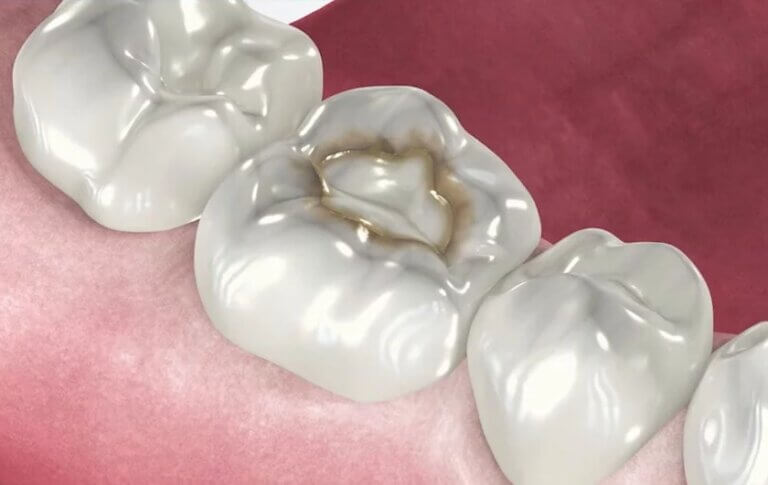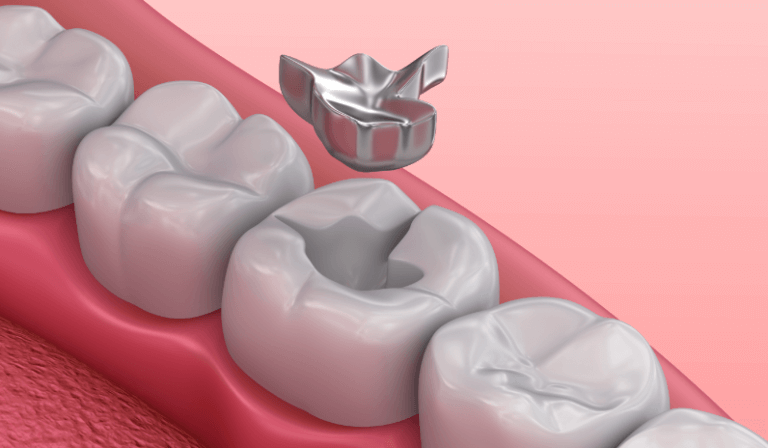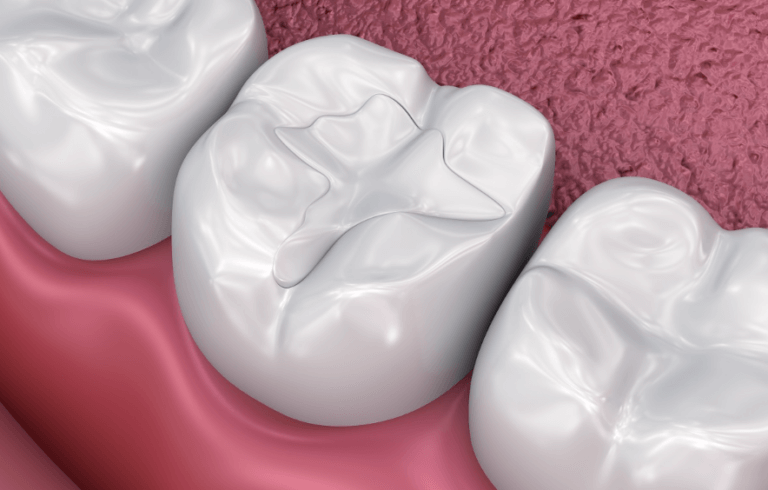Loose Tooth Filling

What Is A Loose Tooth Filling?
A dental filling is a common treatment used to fix a tooth that has been damaged by tooth decay or dental trauma. It is typically made of a durable material such as amalgam, composite resin, or glass ionomer, and is designed to restore the tooth’s function and prevent further decay. However, sometimes fillings can become loose or feel like they are falling out, leaving the tooth vulnerable to decay and sensitivity. This is known as a Loose Tooth Filling, and it is a common problem that many people experience.
A loose tooth filling may not seem like a big deal, but it can cause a range of problems if left untreated. Not only can a missing tooth filling cause sensitivity or pain when chewing or drinking cold or hot beverages, it allows bacteria to enter the tooth and cause further decay or infection, possibly requiring root canal treatment. Before you contact a Toronto dentist to examine a Loose Tooth Filling, there are some things you should know as a patient:
- Why Do I Have A Loose Tooth Filling?
- Signs And Symptoms Of A Loose Tooth Filling
- Treatment Options For A Loose Tooth Filling
- How To Prevent A Loose Tooth Filling
- Managing A Loose Tooth Filling Until You Can See The Dentist
If you have questions about A Loose Tooth Filling or other dental problems, please contact us for more information.
Why Do I Have A Loose Tooth Filling?
There are several reasons why you might have a loose tooth filling, including:
- Tooth Decay: When a tooth is damaged by tooth decay, a filling is used to restore the tooth. However, poor oral hygiene can permit the decay to progress, weakening the filling so that it can become loose over time.
- Wear and Tear: Over time, the constant use of teeth when chewing, grinding, or clenching can cause wear and tear on the filling, leading to its failure.
- Cracks in the tooth: Sometimes, due to wear and tear or from excessive forces on a vulnerable tooth (such as one with a large tooth filling), a crack can form around the old filling that can dislodge it, making it loose and eventually falling out. One important sign of a cracked tooth is if you feel pain when biting down on it.
- Dental Trauma: A blow to the face or mouth can dislodge a filling or cause it to become loose.
- Age of the Filling: Dental fillings have a lifespan, and over time, they may wear down, break, or become dislodged due to natural processes in the mouth. If your filling is old, it may be more susceptible to damage or failure.
- Poor Oral Hygiene: Neglecting proper oral hygiene can lead to tooth decay and gum disease, which can weaken the filling and cause it to become loose.
- Improper placement: If the filling wasn’t properly placed or bonded to the tooth by the original dentist, it can become loose and fall out over time.
It is important to schedule an appointment with your dentist to prevent further damage from a loose tooth filling. If you have further questions about a Missing Tooth Filling, please contact us.

Signs and Symptoms of a Loose Tooth Filling
If you have a loose tooth filling, you may experience one or more of the following signs and symptoms:
- Tooth sensitivity: A loose filling exposes the inner dentin layers of the tooth to the outside environment, which can cause tooth sensitivity, especially when exposed to hot or cold temperatures.
- Pain: If the loose filling exposes the tooth’s nerve, it can cause severe pain with hot, cold or biting.
- Discoloration: A tooth with a loose filling may become discolored due to the accumulation of bacteria and food particles underneath the filling. Alternatively, the filling may become discolored.
- Infection: In some cases, a loose filling can lead to infection in the tooth or gums, which can cause pain, swelling, and even fever.
If you experience any of these signs or symptoms, it is important to schedule an appointment with your dentist as soon as possible to prevent further damage or infection. If you have further questions about signs and symptoms of a Loose Tooth Filling, please contact us.
Treatment Options for a Loose Tooth Filling
There are several treatment options available to restore a loose tooth filling, depending on the extent of the damage and the size of the original tooth filling. Some of the most common treatment options include:
- Dental Filling: In most cases, the dentist can simply remove the old tooth filling and replace it with a new one made of composite resin, glass ionomer, amalgam, or other dental materials.
- Dental Crown: If the filling is large or the tooth is weakened, a dental crown may be necessary to cover and protect the tooth from future damage.
- Root Canal Treatment: If tooth decay underneath the loose filling has reached the tooth’s pulp, a root canal will be necessary to remove the infected nerve tissue and replace it with a root canal filling. Afterwards, your dentist may recommend a dental crown in addition to a dental filling to restore the tooth
- Tooth Extraction: In severe cases, if the tooth is too damaged to be restored, your dentist may need to extract the tooth. Missing teeth can be replaced with dental implants, dental bridges or dentures.
It is important to discuss your treatment options with your dentist to determine the best course of treatment for your specific needs. If you have further questions about how to treat a Loose Tooth Filling, please contact us.

How to Prevent a Loose Tooth Filling
Preventing a loose tooth filling is essential to maintaining good oral health. Here are some tips to help keep your tooth filling clean and healthy for a long time:
- Practice Good Oral Hygiene: Brush your teeth twice a day with fluoride toothpaste and floss daily to remove food particles and plaque from your teeth. The Waterpik waterflosser is also a terrific adjunctive tool to keep the area around a tooth filling clean.
- Visit Your Dentist Regularly: Schedule regular dental checkups and teeth cleanings to catch any problems early on and address them promptly. If you have old fillings that are worn or damaged, talk to your dentist about replacing them before they become loose or fall out.
- Avoid Hard Foods: Hard and sticky foods can damage dental fillings and weaken the tooth’s structure.
- Limit sugary and acidic foods and drinks: These unhealthy food choices can increase your risk of tooth decay that will weaken your fillings.
- Wear A Mouthguard: If you play sports or grind your teeth, wearing a mouthguard can protect your teeth and fillings from any unnecessary damage.
It is important to note that a tooth filling can fall out even if you have good oral hygiene practices and see your dentist regularly for checkups and cleanings. If you have further questions about how to prevent a Loose Tooth Filling, please contact us.
Managing a Loose Tooth Filling Until You Can See the Dentist
If you experience a missing tooth filling, it is important to seek dental attention as soon as possible. However, if you cannot see a dentist immediately, here are some tips to manage the missing filling:
- Use Over-the-Counter Pain Medication: Over-the-counter pain medication, such as Advil (ibuprofen) or Tylenol (acetaminophen), can help relieve tooth pain or sensitivity from a loose dental filling. Follow the instructions on the label and do not exceed the recommended dose. Unless you have a health condition that prevents you from taking either ibuprofen or acetaminophen, the absolute maximum dose that I recommend patients take for the worst dental pain is 600 mg ibuprofen combined with 1000 mg acetaminophen every 4 to 6 hours.
- Practice good oral hygiene: Keeping the area around the loose filling as clean as possible can help prevent further decay and alleviate some of the pain or sensitivity. Brush and floss gently around the tooth. Rinsing your mouth with warm salt water or mouthwash can help reduce infection, inflammation and alleviate toothache pain. You can buy any mouthwash available at your pharmacy or health foods store. Alternatively, you can mix a teaspoon of salt in a cup of warm water and swish the solution around your mouth for about 30 seconds before spitting it out.
- Avoid Hot And Cold Foods: Foods that are too hot or too cold can cause tooth sensitivity and pain. Choose room temperature foods so as not to irritate the sensitive tooth.
- Avoid Hard And Sticky Foods: Teeth with loose fillings are vulnerable to more damage, so it is prudent to avoid hard and sticky foods that can weaken the tooth’s structure.
- Avoid Chewing On The Damaged Tooth: Favor using the other side of your mouth as not to further damage the tooth with the loose filling.
It is important to remember that these tips are temporary measures and should not replace a visit to the dentist. Seeking prompt dental attention is crucial to prevent further damage or infection. If you have further questions about how to manage a Loose Tooth Filling, please contact us.

